包子学系列——Java基础第十三章_IO流
第十三章 IO流
File类的使用#
File类的理解#
File类的一个对象,代表一个文件或一个文件目录(俗称:文件夹)
File类声明在java.io包下
File类中涉及到关于文件或文件目录的创建、删除、重命名、修改时间、文件大小等方法,并未涉及到写入或读取文件内容的操作。如果需要读取或写入文件内容,必须使用IO流来完成。
后续File类的对象常会作为参数传递到流的构造器中,指明读取或写入的"终点".
File的实例化#
File(String filePath)
File(String parentPath,String childPath)
File(File parentFile,String childPath)
路径的分类#
相对路径:相较于某个路径下,指明的路径。
绝对路径:包含盘符在内的文件或文件目录的路径
说明:
IDEA中:
如果大家开发使用JUnit中的单元测试方法测试,相对路径即为当前Module下。
如果大家使用main()测试,相对路径即为当前的Project下。
Eclipse中:
不管使用单元测试方法还是使用main()测试,相对路径都是当前的Project下。
路径分隔符#
windows和DOS系统默认使用“\”来表示
// D:\陈2\包子学系列\Java01_包子学Java基础
UNIX和URL使用“/”来表示
// home/cyb
File类的常用方法#
File类的获取功能#
public String getAbsolutePath():获取绝对路径
public String getPath() :获取路径
public String getName() :获取名称
public String getParent():获取上层文件目录路径。若无,返回null
public long length() :获取文件长度(即:字节数)。不能获取目录的长度。
public long lastModified() :获取最后一次的修改时间,毫秒值
public String[] list() :获取指定目录下的所有文件或者文件目录的名称数组
public File[] listFiles() :获取指定目录下的所有文件或者文件目录的File数组
File类的重命名功能#
public boolean renameTo(File dest):把文件重命名为指定的文件路径
File类的判断功能#
public boolean isDirectory():判断是否是文件目录
public boolean isFile() :判断是否是文件
public boolean exists() :判断是否存在
public boolean canRead() :判断是否可读
public boolean canWrite() :判断是否可写
public boolean isHidden() :判断是否隐藏
File类的创建功能#
public boolean createNewFile() :创建文件。若文件存在,则不创建,返回false
public boolean mkdir() :创建文件目录。如果此文件目录存在,就不创建了。如果此文件目录的上层目录不存在,也不创建。
public boolean mkdirs() :创建文件目录。如果上层文件目录不存在,一并创建
注意事项:如果你创建文件或者文件目录没有写盘符路径,那么,默认在项目 路径下。
File类的删除功能#
public boolean delete():删除文件或者文件夹
删除注意事项:
Java中的删除不走回收站。 要删除一个文件目录,请注意该文件目录内不能包含文件或者文件目录
练习#
File dir1 = new File("D:/IOTest/dir1");
if (!dir1.exists()) { // 如果D:/IOTest/dir1不存在,就创建为目录
dir1.mkdir();
}
// 创建以dir1为父目录,名为"dir2"的File对象
File dir2 = new File(dir1, "dir2");
if (!dir2.exists()) { // 如果还不存在,就创建为目录
dir2.mkdirs();
}
File dir4 = new File(dir1, "dir3/dir4");
if (!dir4.exists()) {
dir4.mkdirs();
}
// 创建以dir2为父目录,名为"test.txt"的File对象
File file = new File(dir2, "test.txt");
if (!file.exists()) { // 如果还不存在,就创建为文件
file.createNewFile();
}
//2. 判断指定目录下是否有后缀名为.jpg的文件,如果有,就输出该文件名称
@Test
public void test1(){
File srcFile = new File("d:\\code");
String[] fileNames = srcFile.list();
for(String fileName : fileNames){
if(fileName.endsWith(".jpg")){
System.out.println(fileName);
}
}
}
public void test2(){
File srcFile = new File("d:\\code");
File[] listFiles = srcFile.listFiles();
for(File file : listFiles){
if(file.getName().endsWith(".jpg")){
System.out.println(file.getAbsolutePath());
}
}
}
//3. 遍历指定目录所有文件名称,包括子文件目录中的文件。
// 拓展1:并计算指定目录占用空间的大小
// 拓展2:删除指定文件目录及其下的所有文件
public static void printSubFile(File dir) {
// 打印目录的子文件
File[] subfiles = dir.listFiles();
for (File f : subfiles) {
if (f.isDirectory()) {// 文件目录
printSubFile(f);
} else {// 文件
System.out.println(f.getAbsolutePath());
}
}
}
// 列出file目录的下级,如果它的下级还是目录,接着列出下级的下级,依次类推
// 建议使用File类的File[] listFiles()
public void listAllSubFiles(File file) {
if (file.isFile()) {
System.out.println(file);
} else {
File[] all = file.listFiles();
// 如果all[i]是文件,直接打印
// 如果all[i]是目录,接着再获取它的下一级
for (File f : all) {
listAllSubFiles(f);// 递归调用:自己调用自己就叫递归
}
}
}
//拓展1:求指定目录所在空间的大小
//求一个目录的总大小
public long getDirectorySize(File file) {
// file是文件,那么直接返回file.length()
// file是目录,把它的下一级的所有大小加起来就是它的总大小
long size = 0;
if (file.isFile()) {
size += file.length();
} else {
File[] all = file.listFiles();// 获取file的下一级
// 累加all[i]的大小
for (File f : all) {
size += getDirectorySize(f);// f的大小;
}
}
return size;
}
// 拓展2:删除指定的目录
public void deleteDirectory(File file) {
// 如果file是文件,直接delete
// 如果file是目录,先把它的下一级干掉,然后删除自己
if (file.isDirectory()) {
File[] all = file.listFiles();
// 循环删除的是file的下一级
for (File f : all) {// f代表file的每一个下级
deleteDirectory(f);
}
}
// 删除自己
file.delete();
}
IO流概述#
输入input:读取外部数据(磁盘、光盘等存储设备的数据)到 程序(内存)中。
输出output:将程序(内存) 数据输出到磁盘、光盘等存储设 备中。
分界是以内存:进内存处理就是 输入流、 出内存就是输出流
最基本的流
| (抽象基类) | 字节流 | 字符流 |
|---|---|---|
| 输入流 | InputStream | Reader |
| 输出流 | OutputStream | Writer |
流的分类#
- 操作数据单位:字节流、字符流
- 数据的流向:输入流、输出流
- 流的角色:节点流、处理流
流的体系结构#
说明:红框对应的是IO流中的4个抽象基类。
蓝框的流需要大家重点关注。
- 基本的四个抽象基类
- 文件的四个
- 缓冲的四个
- 转换的两个流
BufferedReader br= new BufferedReader(new InputStreamReader(System.in));BufferedWriter bw = new BufferedWriter(new OutStreamWriter(System.out));
重点说明的几个流结构#
输入、输出的标准化过程#
输入过程#
① 创建File类的对象,指明读取的数据的来源。(要求此文件一定要存在)
② 创建相应的输入流,将File类的对象作为参数,传入流的构造器中
③ 具体的读入过程:
创建相应的byte[] 或 char[]。
④ 关闭流资源
说明:程序中出现的异常需要使用try-catch-finally处理。
InputStream & Reader
InputStream 和 Reader 是所有输入流的基类
InputStream
int read()
int read(byte[] b)
int read(byte[] b, int off, int len)
Reader
int read()
int read(char [] c)
int read(char [] c, int off, int len)
// 程序中打开的文件 IO 资源不属于内存里的资源,垃圾回收机制无法回收该资
源,所以应该显式关闭文件 IO 资源
// FileInputStream 从文件系统中的某个文件中获得输入字节。FileInputStream
用于读取非文本数据之类的原始字节流。要读取字符流,需要使用 FileReader
输出过程#
① 创建File类的对象,指明写出的数据的位置。(不要求此文件一定要存在)
② 创建相应的输出流,将File类的对象作为参数,传入流的构造器中
③ 具体的写出过程:
write(char[]/byte[] buffer,0,len)
④ 关闭流资源
说明:程序中出现的异常需要使用try-catch-finally处理。
OutputStream & Writer
void write(int b/int c);
void write(byte[] b/char[] cbuf);
void write(byte[] b/char[] buff, int off, int len);
void flush();
void close(); 需要先刷新,再关闭此流
// 因为字符流直接以字符作为操作单位,所以 Writer 可以用字符串来替换字符数组,
即以 String 对象作为参数
void write(String str);
void write(String str, int off, int len);
// FileOutputStream 从文件系统中的某个文件中获得输出字节。FileOutputStream
用于写出非文本数据之类的原始字节流。要写出字符流,需要使用 FileWriter
节点流(或文件流)#
FileReader使用#
1.建立一个流对象,将已存在的一个文件加载进流。
FileReader fr = new FileReader(new File(“Test.txt”));
2.创建一个临时存放数据的数组。
char[] ch = new char[1024];
3.调用流对象的读取方法将流中的数据读入到数组中。
fr.read(ch);
4. 关闭资源。
fr.close();
@Test
public void testFileReader1() {
FileReader fr = null;
try {
//1.File类的实例化
File file = new File("hello.txt");
//2.FileReader流的实例化
fr = new FileReader(file);
//3.读入的操作
//read(char[] cbuf):返回每次读入cbuf数组中的字符的个数。如果达到文件末尾,返回-1
char[] cbuf = new char[5];
int len;
while((len = fr.read(cbuf)) != -1){
//方式一:
//错误的写法
// for(int i = 0;i < cbuf.length;i++){
// System.out.print(cbuf[i]);
// }
//正确的写法
// for(int i = 0;i < len;i++){
// System.out.print(cbuf[i]);
// }
//方式二:
//错误的写法,对应着方式一的错误的写法
// String str = new String(cbuf);
// System.out.print(str);
//正确的写法
String str = new String(cbuf,0,len);
System.out.print(str);
}
} catch (IOException e) {
e.printStackTrace();
} finally {
if(fr != null){
//4.资源的关闭
try {
fr.close();
} catch (IOException e) {
e.printStackTrace();
}
}
}
}
说明:
- read()的理解:返回读入的一个字符。如果达到文件末尾,返回-1
- 异常的处理:为了保证流资源一定可以执行关闭操作。需要使用try-catch-finally处理
- 读入的文件一定要存在,否则就会报FileNotFoundException
FileWriter的使用#
1.创建流对象,建立数据存放文件
FileWriter fw = new FileWriter(new File(“Test.txt”));
2.调用流对象的写入方法,将数据写入流
fw.write(“atguigu-songhongkang”);
3.关闭流资源,并将流中的数据清空到文件中。
fw.close();
@Test
public void testFileWriter() {
FileWriter fw = null;
try {
//1.提供File类的对象,指明写出到的文件
File file = new File("hello1.txt");
//2.提供FileWriter的对象,用于数据的写出
fw = new FileWriter(file,false);
//3.写出的操作
fw.write("I have a dream!\n");
fw.write("you need to have a dream!");
} catch (IOException e) {
e.printStackTrace();
} finally {
//4.流资源的关闭
if(fw != null){
try {
fw.close();
} catch (IOException e) {
e.printStackTrace();
}
}
}
}
说明:
- 输出操作,对应的File可以不存在的。并不会报异常
- File对应的硬盘中的文件如果不存在,在输出的过程中,会自动创建此文件。
- File对应的硬盘中的文件如果存在:
- 如果流使用的构造器是:FileWriter(file,false) / FileWriter(file):对原文件的覆盖
- 如果流使用的构造器是:FileWriter(file,true):不会对原文件覆盖,而是在原文件基础上追加内容
文本文件的复制#
@Test
public void testFileReaderFileWriter() {
FileReader fr = null; //用的是字符流
FileWriter fw = null;
try {
//1.创建File类的对象,指明读入和写出的文件
File srcFile = new File("hello.txt");
File destFile = new File("hello2.txt");
//不能使用字符流来处理图片等字节数据
// File srcFile = new File("爱情与友情.jpg");
// File destFile = new File("爱情与友情1.jpg");
//2.创建输入流和输出流的对象
fr = new FileReader(srcFile);
fw = new FileWriter(destFile);
//3.数据的读入和写出操作
char[] cbuf = new char[5];
int len;//记录每次读入到cbuf数组中的字符的个数
while((len = fr.read(cbuf)) != -1){
//每次写出len个字符
fw.write(cbuf,0,len);
}
} catch (IOException e) {
e.printStackTrace();
} finally {
//4.关闭流资源
//方式一:
// try {
// if(fw != null)
// fw.close();
// } catch (IOException e) {
// e.printStackTrace();
// }finally{
// try {
// if(fr != null)
// fr.close();
// } catch (IOException e) {
// e.printStackTrace();
// }
// }
//方式二:
try {
if(fw != null)
fw.close();
} catch (IOException e) {
e.printStackTrace();
}
try {
if(fr != null)
fr.close();
} catch (IOException e) {
e.printStackTrace();
}
}
}
FileInputStream / FileOutputStream的使用#
对于文本文件(.txt,.java,.c,.cpp),使用字符流处理
对于非文本文件(.jpg,.mp3,.mp4,.avi,.doc,.ppt,...),使用字节流处理
// 图片复制
@Test
public void testFileInputOutputStream() {
FileInputStream fis = null; //字节流
FileOutputStream fos = null;
try {
//1.造文件
File srcFile = new File("爱情与友情.jpg");
File destFile = new File("爱情与友情2.jpg");
//2.造流
fis = new FileInputStream(srcFile);
fos = new FileOutputStream(destFile);
//3.复制的过程
byte[] buffer = new byte[5];
int len;
while((len = fis.read(buffer)) != -1){
fos.write(buffer,0,len);
}
} catch (IOException e) {
e.printStackTrace();
} finally {
if(fos != null){
//4.关闭流
try {
fos.close();
} catch (IOException e) {
e.printStackTrace();
}
}
if(fis != null){
try {
fis.close();
} catch (IOException e) {
e.printStackTrace();
}
}
}
}
相对路径在IDEA和Eclipse中使用的区别?
IDEA:
- 如果使用单元测试方法,相对路径基于当前的Module的。
- 如果使用main()测试,相对路径基于当前Project的。
Eclipse:
- 单元测试方法还是main(),相对路径都是基于当前Project的。
缓冲流#
缓冲流涉及到的类#
- BufferedInputStream
- BufferedOutputStream
- BufferedReader
- BufferedWriter
缓冲流要“套接”在相应的节点流之上,根据数据操作单位可以把缓冲流分为:
作用#
作用:提供流的读取、写入的速度
提高读写速度的原因:内部提供了一个缓冲区。默认情况下是8kb
使用BufferedInputStream和BufferedOutputStream:处理非文本文件#
//实现文件复制的方法
public void copyFileWithBuffered(String srcPath,String destPath){
BufferedInputStream bis = null;
BufferedOutputStream bos = null;
try {
//1.造文件
File srcFile = new File(srcPath);
File destFile = new File(destPath);
//2.造流
//2.1 造节点流
FileInputStream fis = new FileInputStream((srcFile));
FileOutputStream fos = new FileOutputStream(destFile);
//2.2 造缓冲流
bis = new BufferedInputStream(fis);
bos = new BufferedOutputStream(fos);
//3.复制的细节:读取、写入
byte[] buffer = new byte[1024];
int len;
while((len = bis.read(buffer)) != -1){
bos.write(buffer,0,len);
}
} catch (IOException e) {
e.printStackTrace();
} finally {
//4.资源关闭
//要求:先关闭外层的流,再关闭内层的流
if(bos != null){
try {
bos.close();
} catch (IOException e) {
e.printStackTrace();
}
}
if(bis != null){
try {
bis.close();
} catch (IOException e) {
e.printStackTrace();
}
}
//说明:关闭外层流的同时,内层流也会自动的进行关闭。关于内层流的关闭,我们可以省略.
// fos.close();
// fis.close();
}
}
使用BufferedReader和BufferedWriter:处理文本文件#
@Test
public void testBufferedReaderBufferedWriter(){
BufferedReader br = null;
BufferedWriter bw = null;
try {
//创建文件和相应的流
br = new BufferedReader(new FileReader(new File("dbcp.txt")));
bw = new BufferedWriter(new FileWriter(new File("dbcp1.txt")));
//读写操作
//方式一:使用char[]数组
// char[] cbuf = new char[1024];
// int len;
// while((len = br.read(cbuf)) != -1){
// bw.write(cbuf,0,len);
// // bw.flush();
// }
//方式二:使用String
String data;
while((data = br.readLine()) != null){
//方法一:
// bw.write(data + "\n");//data中不包含换行符
//方法二:
bw.write(data);//data中不包含换行符
bw.newLine();//提供换行的操作
}
} catch (IOException e) {
e.printStackTrace();
} finally {
//关闭资源
if(bw != null){
try {
bw.close();
} catch (IOException e) {
e.printStackTrace();
}
}
if(br != null){
try {
br.close();
} catch (IOException e) {
e.printStackTrace();
}
}
}
}
转换流#
转换流涉及到的类:属于字符流#
InputStreamReader:将一个字节的输入流转换为字符的输入流
解码:字节、字节数组 --->字符数组、字符串
OutputStreamWriter:将一个字符的输出流转换为字节的输出流
编码:字符数组、字符串 ---> 字节、字节数组
说白了。看下图,就是为了使用字符流处理字节流
提供字节流与字符流之间的转换#
典型实现#
@Test
public void test1() throws IOException {
FileInputStream fis = new FileInputStream("dbcp.txt");
// InputStreamReader isr = new InputStreamReader(fis);//使用系统默认的字符集
//参数2指明了字符集,具体使用哪个字符集,取决于文件dbcp.txt保存时使用的字符集
InputStreamReader isr = new InputStreamReader(fis,"UTF-8");//使用系统默认的字符集
char[] cbuf = new char[20];
int len;
while((len = isr.read(cbuf)) != -1){
String str = new String(cbuf,0,len);
System.out.print(str);
}
isr.close();
}
@Test
public void test2() throws Exception {
//1.造文件、造流
File file1 = new File("dbcp.txt");
File file2 = new File("dbcp_gbk.txt");
FileInputStream fis = new FileInputStream(file1);
FileOutputStream fos = new FileOutputStream(file2);
InputStreamReader isr = new InputStreamReader(fis,"utf-8");
OutputStreamWriter osw = new OutputStreamWriter(fos,"gbk");
//2.读写过程
char[] cbuf = new char[20];
int len;
while((len = isr.read(cbuf)) != -1){
osw.write(cbuf,0,len);
}
//3.关闭资源
isr.close();
osw.close();
}
// 文件编码的方式(比如:GBK),决定了解析时使用的字符集(也只能是GBK)。
常见的编码表#
ASCII:美国标准信息交换码。
用一个字节的7位可以表示。
ISO8859-1:拉丁码表。欧洲码表
用一个字节的8位表示。
GB2312:中国的中文编码表。最多两个字节编码所有字符
GBK:中国的中文编码表升级,融合了更多的中文文字符号。最多两个字节编码
Unicode:国际标准码,融合了目前人类使用的所字符。为每个字符分配唯一的字符码。所有的文字都用两个字节来表示。
UTF-8:变长的编码方式,可用1-4个字节来表示一个字符。
其他流的使用#
标准的输入输出流#
System.in:标准的输入流,默认从键盘输入
System.out:标准的输出流,默认从控制台输出
修改默认的输入和输出行为
System类的setIn(InputStream is) / setOut(PrintStream ps)方式重新指定输入和输出的流。
打印流#
PrintStream 和PrintWriter
提供了一系列重载的print()和println()方法,用于多种数据类型的输出
System.out返回的是PrintStream的实例
数据流#
DataInputStream 和 DataOutputStream
作用
用于读取或写出基本数据类型的变量或字符串
例子
-
将内存中的字符串、基本数据类型的变量写出到文件中。
@Test public void test3() throws IOException { //1. DataOutputStream dos = new DataOutputStream(new FileOutputStream("data.txt")); //2. dos.writeUTF("刘建辰"); dos.flush();//刷新操作,将内存中的数据写入文件 dos.writeInt(23); dos.flush(); dos.writeBoolean(true); dos.flush(); //3. dos.close(); } -
将文件中存储的基本数据类型变量和字符串读取到内存中,保存在变量中。
@Test public void test4() throws IOException { //1. DataInputStream dis = new DataInputStream(new FileInputStream("data.txt")); //2. String name = dis.readUTF(); int age = dis.readInt(); boolean isMale = dis.readBoolean(); System.out.println("name = " + name); System.out.println("age = " + age); System.out.println("isMale = " + isMale); //3. dis.close(); }
对象流的使用#
对象流#
ObjectInputStream 和 ObjectOutputStream
作用#
ObjectOutputStream:内存中的对象--->存储中的文件、通过网络传输出去:序列化过程
ObjectInputStream:存储中的文件、通过网络接收过来 --->内存中的对象:反序列化过程
对象序列化机制允许把内存中的Java对象转换成平台无关的二进制流,从而允许把这种二进制流持久地保存在磁盘上,或通过网络将这种二进制流传输到另一个网络节点。//当其它程序获取了这种二进制流,就可以恢复成原来的Java对象
序列化和反序列化#
序列化
@Test
public void testObjectOutputStream(){
ObjectOutputStream oos = null;
try {
//1.
oos = new ObjectOutputStream(new FileOutputStream("object.dat"));
//2.
oos.writeObject(new String("我爱北京天安门"));
oos.flush();//刷新操作
oos.writeObject(new Person("王铭",23));
oos.flush();
oos.writeObject(new Person("张学良",23,1001,new Account(5000)));
oos.flush();
} catch (IOException e) {
e.printStackTrace();
} finally {
if(oos != null){
//3.
try {
oos.close();
} catch (IOException e) {
e.printStackTrace();
}
}
}
}
反序列化
@Test
public void testObjectInputStream(){
ObjectInputStream ois = null;
try {
ois = new ObjectInputStream(new FileInputStream("object.dat"));
Object obj = ois.readObject();
String str = (String) obj;
Person p = (Person) ois.readObject();
Person p1 = (Person) ois.readObject();
System.out.println(str);
System.out.println(p);
System.out.println(p1);
} catch (IOException e) {
e.printStackTrace();
} catch (ClassNotFoundException e) {
e.printStackTrace();
} finally {
if(ois != null){
try {
ois.close();
} catch (IOException e) {
e.printStackTrace();
}
}
}
}
ObjectOutputStream oos = new ObjectOutputStream(new FileOutputStream(“data.txt"));
Person p = new Person("韩梅梅", 18, "中华大街", new Pet());
oos.writeObject(p);
oos.flush();
oos.close();
ObjectInputStream ois = new ObjectInputStream(new FileInputStream(“data.txt"));
Person p1 = (Person)ois.readObject();
System.out.println(p1.toString());
ois.close();
实现序列化的对象所属的类需要满足#
- 需要实现接口:Serializable
- 当前类提供一个全局常量:serialVersionUID
- 除了当前Person类需要实现Serializable接口之外,还必须保证其内部所属性也必须是可序列化的。(默认情况下,基本数据类型可序列化)
补充:ObjectOutputStream和ObjectInputStream不能序列化static和transient修饰的成员变量
Path、 Paths、Files类的使用#
NIO的使用说明#
- Java NIO (New IO,Non-Blocking IO)是从Java 1.4版本开始引入的一套新的IO API,可以替代标准的Java
IO AP。 - NIO与原来的IO同样的作用和目的,但是使用的方式完全不同,NIO支持面向缓冲区的(IO是面向流的)、基于通道的IO操作。
- NIO将以更加高效的方式进行文件的读写操作。
- 随着 JDK 7 的发布,Java对NIO进行了极大的扩展,增强了对文件处理和文件系统特性的支持,以至于我们称他们为 NIO.2。
Path的使用 ---jdk7提供#
import java.io.File;
File file = new File("index.html");
import java.nio.file.Path;
import java.nio.file.Paths;
Path path = Paths.get("index.html");
Path可以看成是File类的升级版本,实际引用的资 源也可以不存在

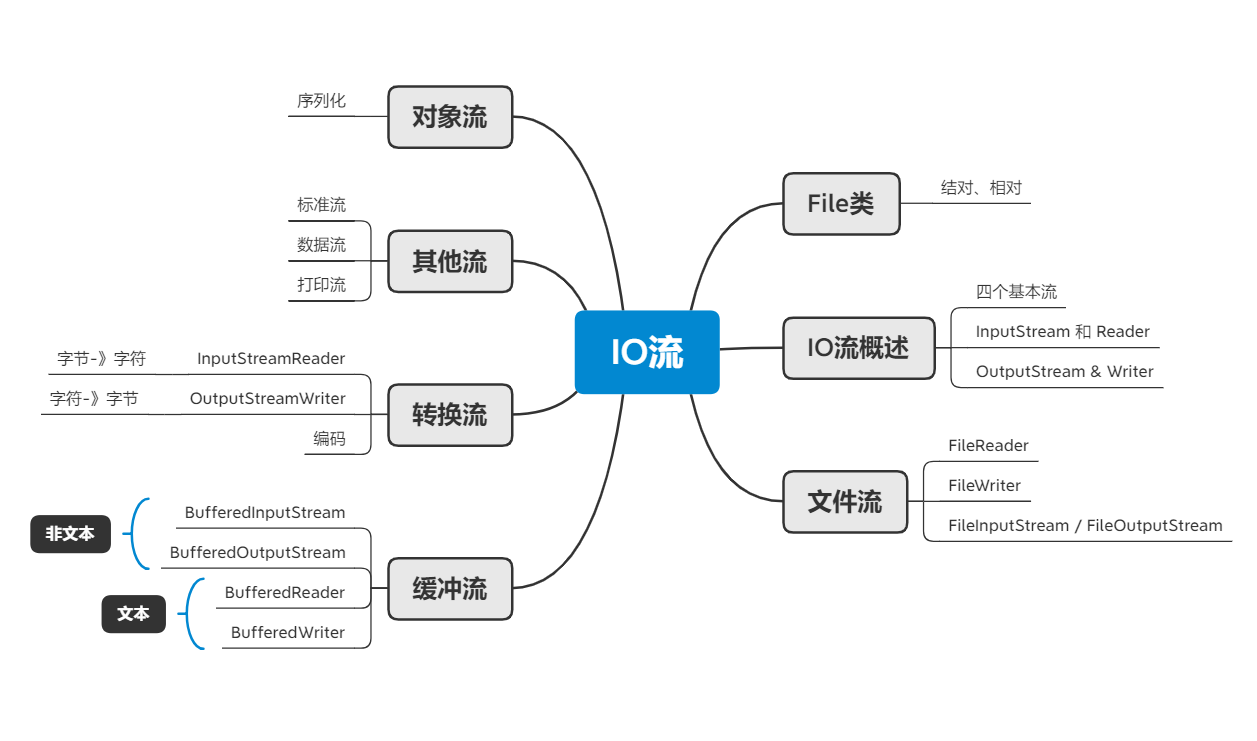
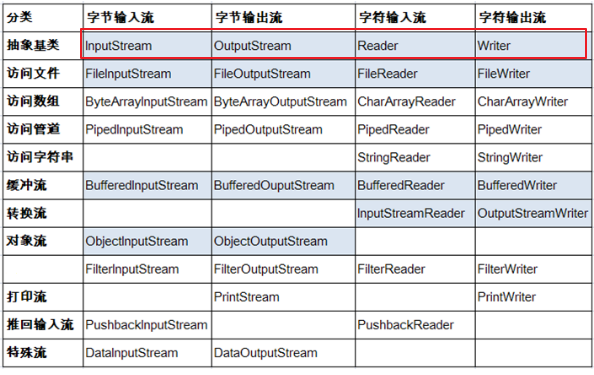

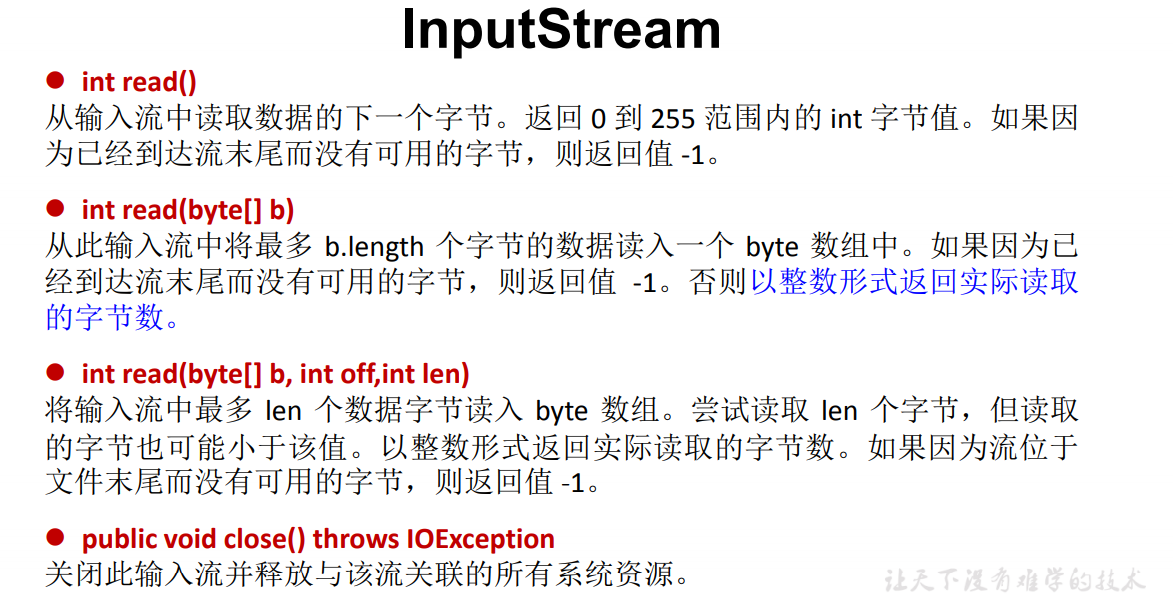
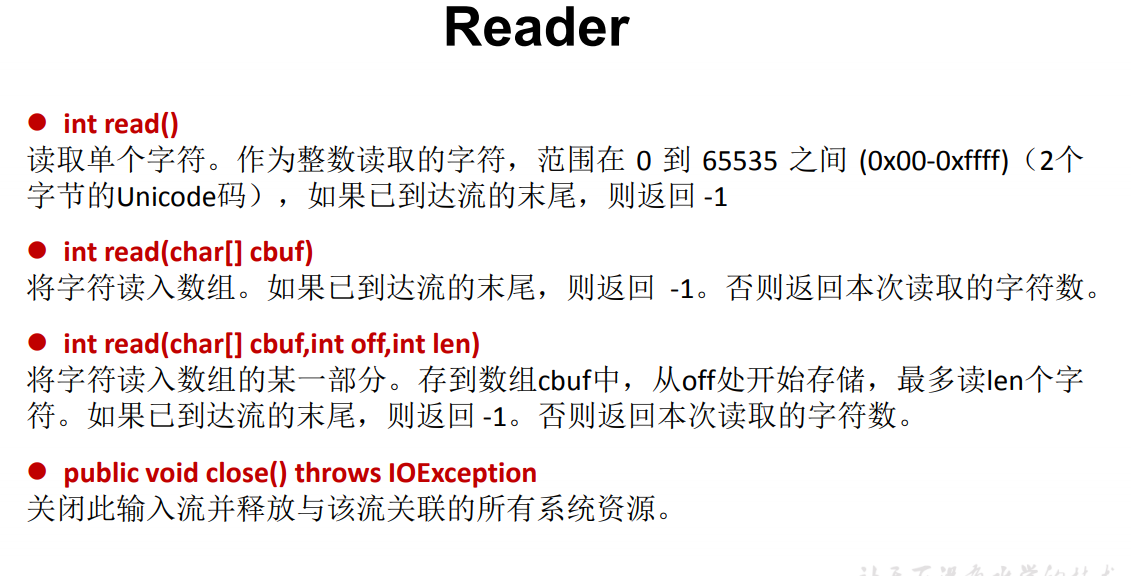
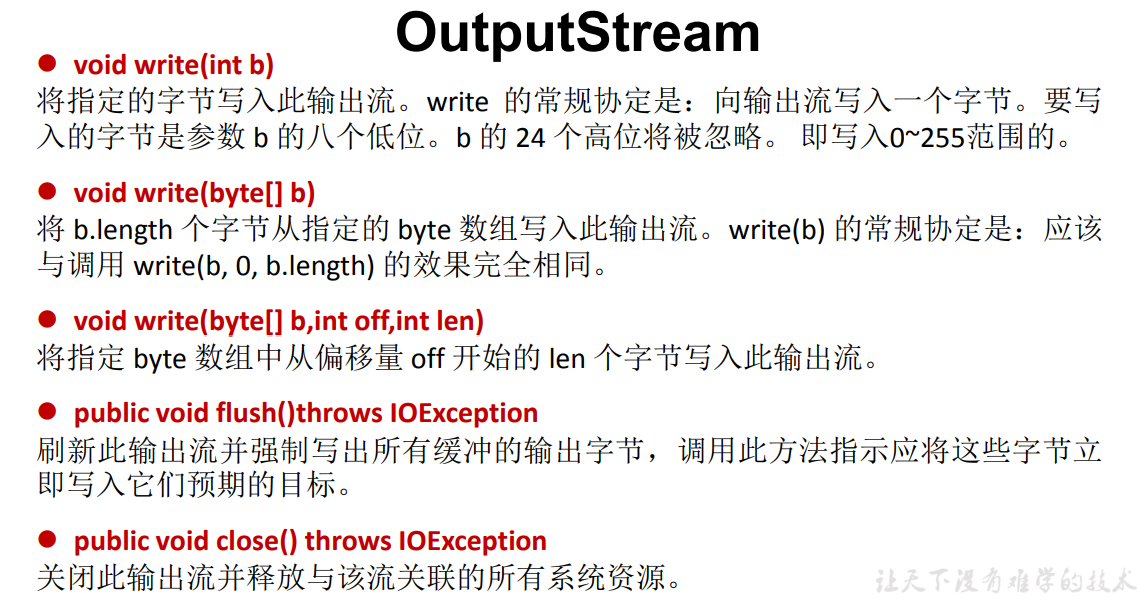

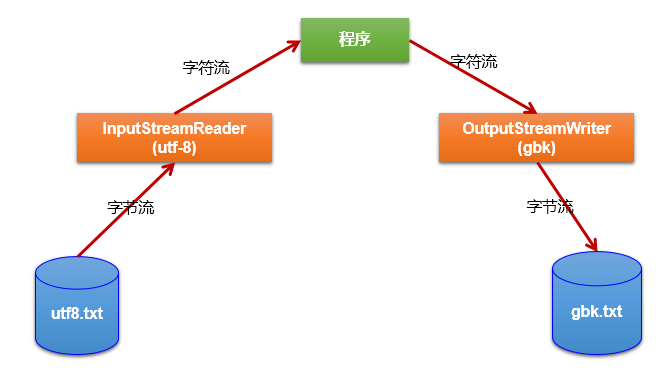


【推荐】编程新体验,更懂你的AI,立即体验豆包MarsCode编程助手
【推荐】凌霞软件回馈社区,博客园 & 1Panel & Halo 联合会员上线
【推荐】抖音旗下AI助手豆包,你的智能百科全书,全免费不限次数
【推荐】轻量又高性能的 SSH 工具 IShell:AI 加持,快人一步
· .NET 9 new features-C#13新的锁类型和语义
· Linux系统下SQL Server数据库镜像配置全流程详解
· 现代计算机视觉入门之:什么是视频
· 你所不知道的 C/C++ 宏知识
· 聊一聊 操作系统蓝屏 c0000102 的故障分析
· DeepSeek V3 两周使用总结
· 回顾我的软件开发经历(1)
· C#使用yield关键字提升迭代性能与效率
· 低成本高可用方案!Linux系统下SQL Server数据库镜像配置全流程详解
· 4. 使用sql查询excel内容